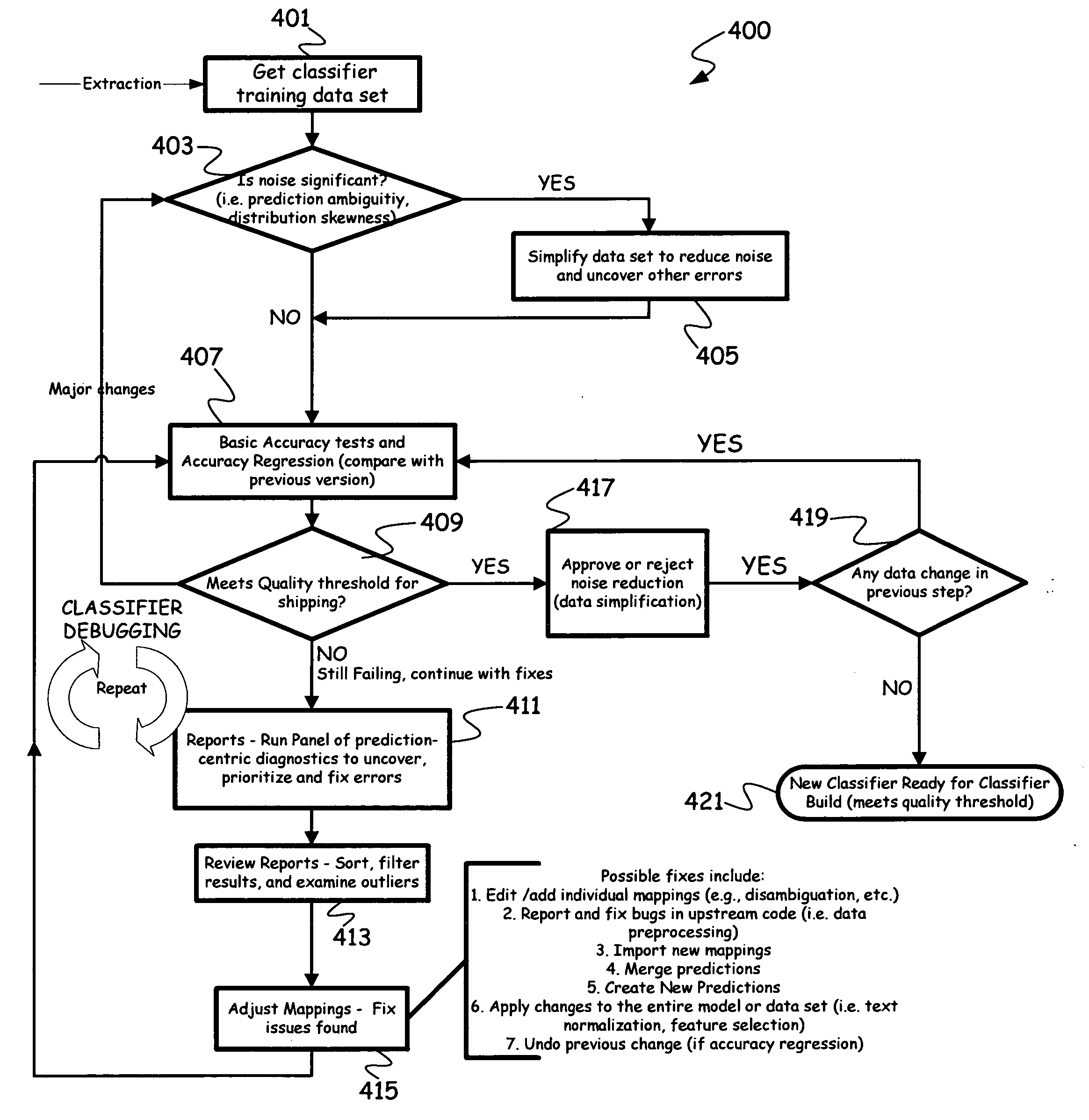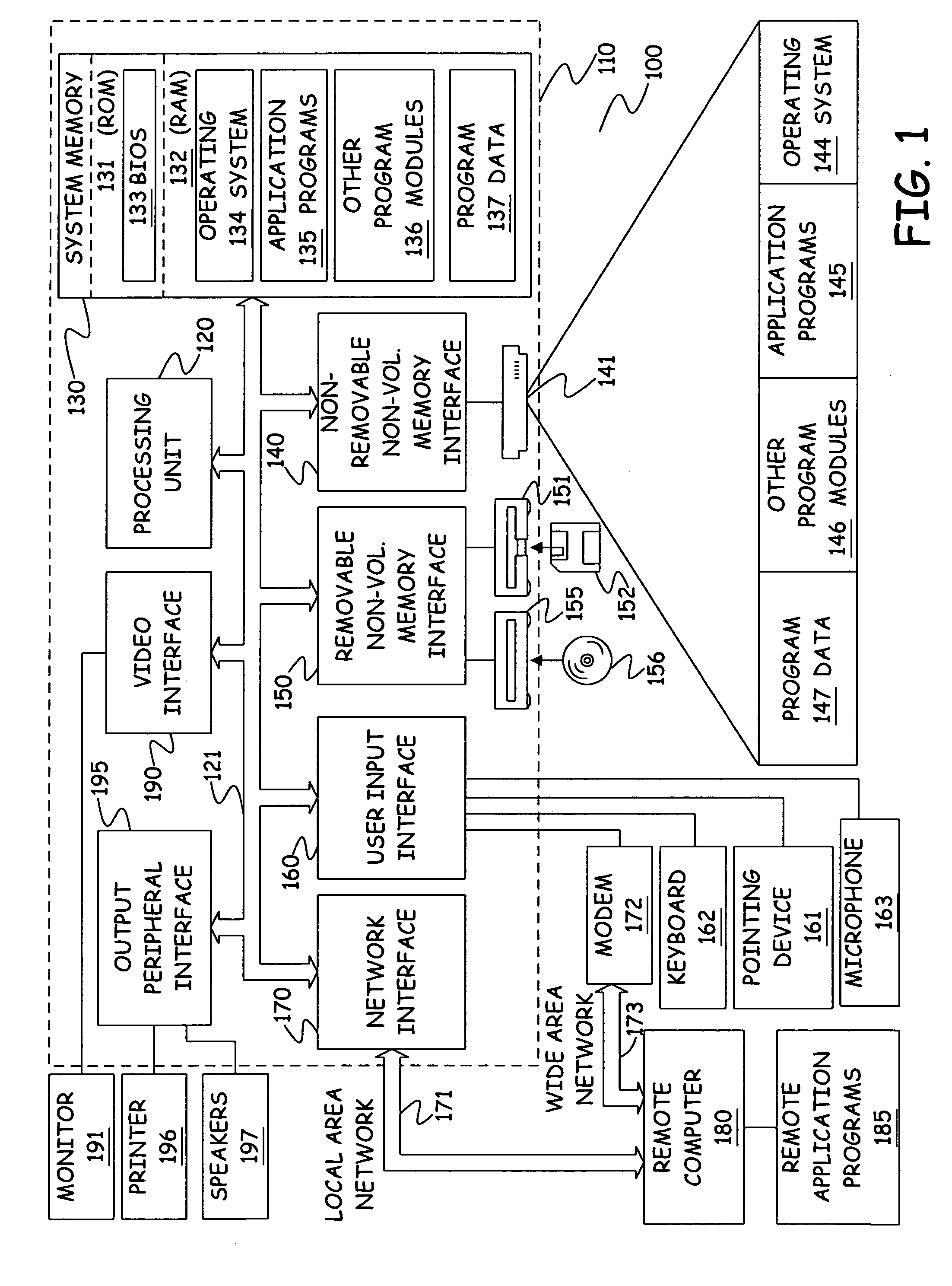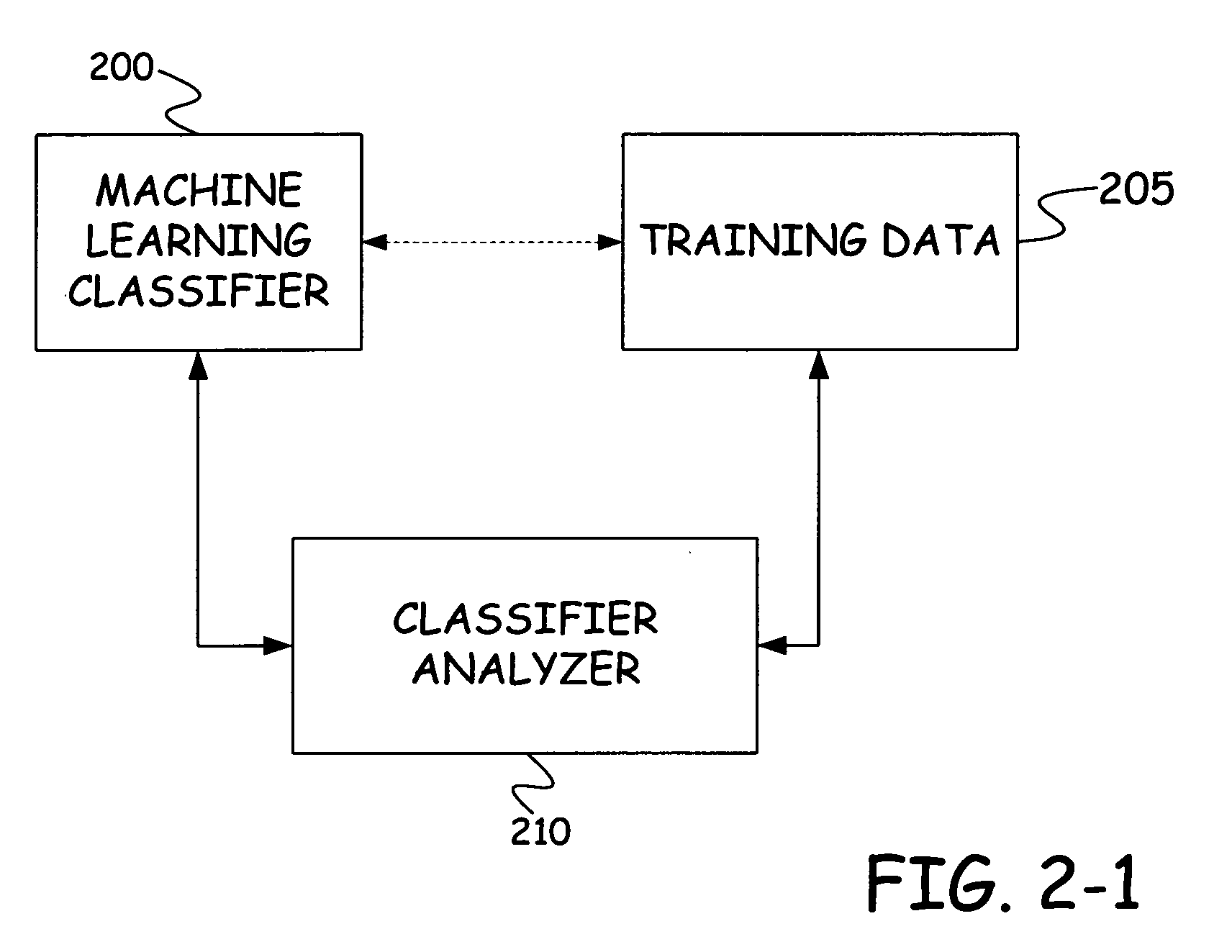Method and apparatus for analysis and decomposition of classifier data anomalies
a classifier and anomaly technology, applied in the field of machine learning classifiers, can solve problems such as data corruption, training data errors, and prone to data errors in technology, and achieve the effect of reducing data nois
- Summary
- Abstract
- Description
- Claims
- Application Information
AI Technical Summary
Benefits of technology
Problems solved by technology
Method used
Image
Examples
Embodiment Construction
[0017] The present invention includes methods and systems which facilitate manual data cleanup of machine learning classifier training data by dramatically improving productivity. A principled method for optimizing the size of the data window presented for human review, by prioritization based on cost-benefit (i.e. expected accuracy impact), is presented. Further, the present invention offers a measure of robustness to data errors, by allowing detection of abnormal patterns and facilitating a workflow in which the highest cost issues can be identified and solved first.
[0018] The present invention is particularly beneficial in scenarios in which data errors have significant effect on accuracy of a classifier, especially if the assumption of natural data is likely to have been violated. This can happen when the natural data is exposed to tampering or when natural data is unavailable (i.e. raw data is received from external unregulated sources, the system is under development, data is...
PUM
 Login to View More
Login to View More Abstract
Description
Claims
Application Information
 Login to View More
Login to View More - R&D
- Intellectual Property
- Life Sciences
- Materials
- Tech Scout
- Unparalleled Data Quality
- Higher Quality Content
- 60% Fewer Hallucinations
Browse by: Latest US Patents, China's latest patents, Technical Efficacy Thesaurus, Application Domain, Technology Topic, Popular Technical Reports.
© 2025 PatSnap. All rights reserved.Legal|Privacy policy|Modern Slavery Act Transparency Statement|Sitemap|About US| Contact US: help@patsnap.com



